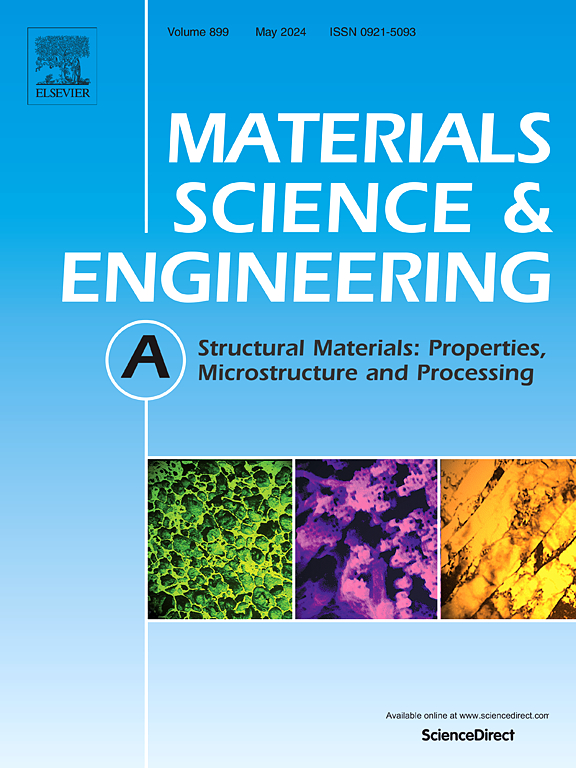Effect of interfacial reaction layers on crack propagation behavior of Ti/Al layered metal composites in uniaxial tensile test from the perspective of local strain
IF 6.1
2区 材料科学
Q1 MATERIALS SCIENCE, MULTIDISCIPLINARY
引用次数: 0
Abstract
This study investigates the effect of the interfacial reaction layer on the crack propagation behavior of Ti/Al layered metal composites (LMCs) under uniaxial tensile testing. Ti/Al and Ti/TiAl3/Al LMCs were fabricated using vacuum hot-pressing. In-situ tensile tests, coupled with digital image correlation methods, were conducted to analyze crack propagation behavior from the perspective of local strain. These results show that the fracture elongation of LMCs decreases significantly with the presence of an interfacial reaction layer. Crack propagation shifts from following the layer interface to propagating perpendicularly to it. At low-tensile strain levels, microcracking occurs within the interfacial reaction layer. However, the adjacent ductile layers effectively suppress the instability of these microcracks. During tension deformation, the stress fields at the crack-tip in the neighboring interfacial reaction layers bridge together, forming stress-concentrated bands, that cause significant strain localization. More importantly, the accelerated accumulation of dislocation in the strain-localized regions depletes the work-hardening capacity, thereby promoting crack propagation along the localized path. Therefore, inhibiting the formation of the interfacial reaction layer in LMCs can enhance strain delocalization and improve fracture elongation.
局部应变下界面反应层对Ti/Al层状金属复合材料单轴拉伸裂纹扩展行为的影响
研究了界面反应层对Ti/Al层状金属复合材料单轴拉伸裂纹扩展行为的影响。采用真空热压法制备了Ti/Al和Ti/TiAl3/Al复合材料。通过现场拉伸试验,结合数字图像相关方法,从局部应变角度分析裂纹扩展行为。结果表明,界面反应层的存在显著降低了lmc的断裂伸长率。裂纹扩展由沿层界面方向向垂直方向扩展。在低拉伸应变水平下,微裂纹发生在界面反应层内。然而,相邻的韧性层有效地抑制了这些微裂纹的不稳定性。在拉伸变形过程中,相邻界面反应层中裂纹尖端的应力场桥接在一起,形成应力集中带,导致明显的应变局部化。更重要的是,位错在应变局部化区域的加速积累耗尽了加工硬化能力,从而促进了裂纹沿局部化路径的扩展。因此,抑制lmc中界面反应层的形成可以增强应变离域,提高断裂伸长率。
本文章由计算机程序翻译,如有差异,请以英文原文为准。
求助全文
约1分钟内获得全文
求助全文
来源期刊

Materials Science and Engineering: A
工程技术-材料科学:综合
CiteScore
11.50
自引率
15.60%
发文量
1811
审稿时长
31 days
期刊介绍:
Materials Science and Engineering A provides an international medium for the publication of theoretical and experimental studies related to the load-bearing capacity of materials as influenced by their basic properties, processing history, microstructure and operating environment. Appropriate submissions to Materials Science and Engineering A should include scientific and/or engineering factors which affect the microstructure - strength relationships of materials and report the changes to mechanical behavior.
 求助内容:
求助内容: 应助结果提醒方式:
应助结果提醒方式:


